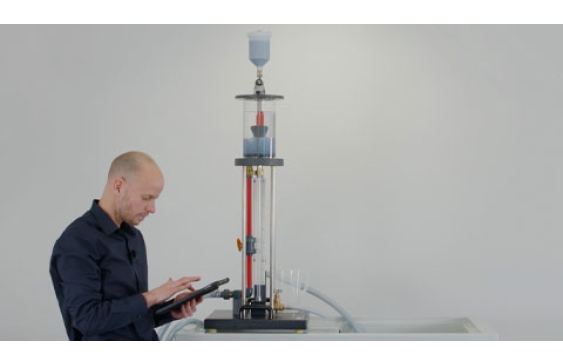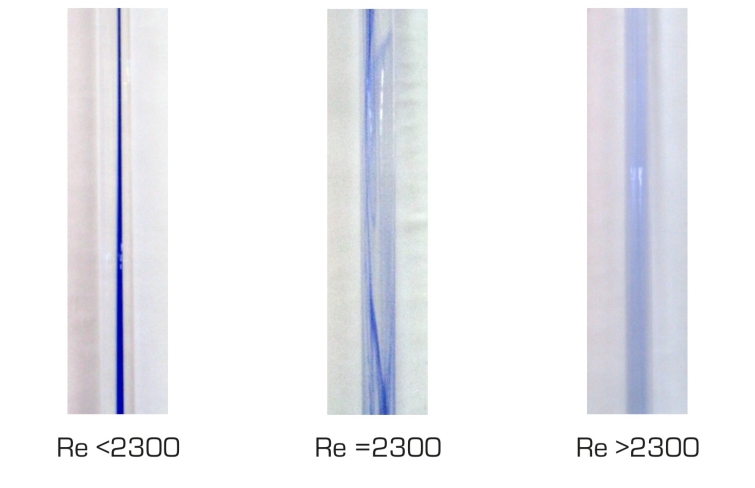The Osborne Reynolds experiment is used to display laminar and turbulent flows. During the experiment it is possible to observe the transition from laminar to turbulent flow after a limiting velocity. The Reynolds number is used to assess whether a flow is laminar or turbulent.
With HM 150.18 the streamlines during laminar or turbulent flow are displayed in colour with the aid of an injected contrast medium (ink). The experimental results can be used to determine the critical Reynolds number.
The experimental unit consists of a transparent pipe section through which water flows, with flow-optimised inlet. A valve can be used to adjust the flow rate in the pipe section. Ink is injected into the flowing water. A layer of glass beads in the water tank ensures an even and low-turbulence flow.
The experimental unit is positioned easily and securely on the work surface of the HM 150 base module. The water is supplied and the flow rate measured by HM 150. Alternatively, the experimental unit can be operated by the laboratory supply.
In order to perform a virtual analysis of flow behaviour, CFD simulations are often used in practice. Such simulations allow, for example, flow visualisations in areas that cannot be visualised experimentally. In the GUNT Media Center, flow visualisations based on CFD calculations are available online. There are also multimedia teaching materials including E-Learning courses on basic knowledge and calculations. Videos show a complete experiment with preparation, execution and evaluation. Worksheets with solutions supplement the teaching material.




















